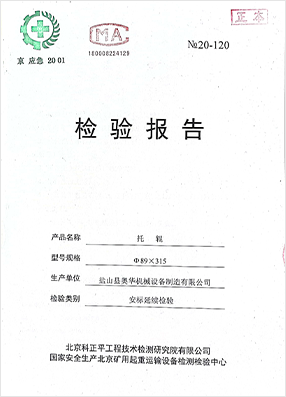 Afrikaans
Afrikaans  Albanian
Albanian  Amharic
Amharic  Arabic
Arabic  Armenian
Armenian  Azerbaijani
Azerbaijani  Basque
Basque  Belarusian
Belarusian  Bengali
Bengali  Bosnian
Bosnian  Bulgarian
Bulgarian  Catalan
Catalan  Cebuano
Cebuano  Corsican
Corsican  Croatian
Croatian  Czech
Czech  Danish
Danish  Dutch
Dutch  English
English  Esperanto
Esperanto  Estonian
Estonian  Finnish
Finnish  French
French  Frisian
Frisian  Galician
Galician  Georgian
Georgian  German
German  Greek
Greek  Gujarati
Gujarati  Haitian Creole
Haitian Creole  hausa
hausa  hawaiian
hawaiian  Hebrew
Hebrew  Hindi
Hindi  Miao
Miao  Hungarian
Hungarian  Icelandic
Icelandic  igbo
igbo  Indonesian
Indonesian  irish
irish  Italian
Italian  Japanese
Japanese  Javanese
Javanese  Kannada
Kannada  kazakh
kazakh  Khmer
Khmer  Rwandese
Rwandese  Korean
Korean  Kurdish
Kurdish  Kyrgyz
Kyrgyz  Lao
Lao  Latin
Latin  Latvian
Latvian  Lithuanian
Lithuanian  Luxembourgish
Luxembourgish  Macedonian
Macedonian  Malgashi
Malgashi  Malay
Malay  Malayalam
Malayalam  Maltese
Maltese  Maori
Maori  Marathi
Marathi  Mongolian
Mongolian  Myanmar
Myanmar  Nepali
Nepali  Norwegian
Norwegian  Norwegian
Norwegian  Occitan
Occitan  Pashto
Pashto  Persian
Persian  Polish
Polish  Portuguese
Portuguese  Punjabi
Punjabi  Romanian
Romanian  Russian
Russian  Samoan
Samoan  Scottish Gaelic
Scottish Gaelic  Serbian
Serbian  Sesotho
Sesotho  Shona
Shona  Sindhi
Sindhi  Sinhala
Sinhala  Slovak
Slovak  Slovenian
Slovenian  Somali
Somali  Spanish
Spanish  Sundanese
Sundanese  Swahili
Swahili  Swedish
Swedish  Tagalog
Tagalog  Tajik
Tajik  Tamil
Tamil  Tatar
Tatar  Telugu
Telugu  Thai
Thai  Turkish
Turkish  Turkmen
Turkmen  Ukrainian
Ukrainian  Urdu
Urdu  Uighur
Uighur  Uzbek
Uzbek  Vietnamese
Vietnamese  Welsh
Welsh  Bantu
Bantu  Yiddish
Yiddish  Yoruba
Yoruba  Zulu
Zulu components of belt conveyor system
Components of a Belt Conveyor System
Belt conveyor systems are essential components in various industries for transporting materials efficiently. They are widely used in manufacturing, mining, and logistics, among others, due to their ability to move bulk materials and packaged goods over both short and long distances. Understanding the fundamental components of a belt conveyor system is crucial for optimizing their performance and ensuring effective material handling. This article will delve into the primary components that make up a belt conveyor system.
1. Belt
The belt is the most critical component of a conveyor system. It serves as the carrying surface for the materials being transported. Typically made from materials like rubber, fabric, or polyurethane, belts can be customized based on the application’s specific requirements. Different belt designs, such as flat belts, modular belts, and cleated belts, cater to various material handling needs. The choice of belt material and design is influenced by factors like the type of material being transported, the distance of the transport, and the environment in which the conveyor operates.
2. Idlers and Rollers
Idlers and rollers are used to support the belt and maintain its tension as it moves along the conveyor structure. These components are positioned at various intervals along the length of the conveyor to reduce friction and wear on the belt. Idler types include trough idlers, which cradle the belt and hold it in a U-shape to better contain the material, and return idlers, which support the belt on its way back after unloading. Proper spacing and alignment of the rollers are critical for ensuring smooth movement and minimizing belt sagging.
3. Drive Unit
The drive unit is responsible for generating the motion needed to move the belt. It typically consists of an electric motor, gearbox, and a drive pulley. The motor provides the necessary power, while the gearbox helps to control the speed and torque of the drive pulley. The drive pulley is connected to the belt, ensuring that the belt moves at a consistent speed. The motor's capacity must be matched to the load requirements, which varies based on the weight and type of material being transported.
components of belt conveyor system

Pulleys are vital for changing the direction of the belt’s movement and for tensioning the belt. A typical conveyor system has two main pulleys the drive pulley at one end and the return pulley at the other end. The design and material of the pulley surface affect the overall belt operation; for instance, rubber or textured surfaces can enhance friction, facilitating better grip between the belt and the pulley. Tensioning pulleys can also be incorporated to maintain optimal tension in the system.
5. Conveyor Frame
The conveyor frame provides the structural support for the entire system. Usually constructed from steel or aluminum, the frame is designed to be robust enough to support the weight of the materials being transported as well as the belt itself. The frame must be engineered to withstand the forces of the material load and any environmental factors, such as humidity or temperature variations. The design of the frame can also include adjustable components to accommodate different belt widths and lengths.
6. Take-Up System
The take-up system plays a critical role in maintaining tension within the belt conveyor. It compensates for the elongation of the belt over time due to wear and environmental influences. Take-up systems can be manual, semi-automatic, or automatic, depending on the level of control required. Automatic systems are commonly used in large-scale operations to ensure optimal tensioning without requiring constant manual adjustment.
7. Control System
Modern belt conveyor systems are equipped with advanced control systems that enhance operational efficiency. These systems utilize sensors, programmable logic controllers (PLCs), and monitoring software to manage the operation of the conveyor. They can regulate speed, detect jams, and maintain safety standards, ensuring that the system runs smoothly and reliably.
Conclusion
In conclusion, belt conveyor systems are composed of several interrelated components that work together to ensure efficient material handling. Each component, from the belt and idlers to the drive unit and control systems, plays a significant role in the overall functionality of the conveyor. Understanding these components is essential for industries looking to improve their material transport processes, minimize downtime, and enhance productivity. Proper maintenance and regular inspections of these components are also crucial to prolonging the lifespan of the conveyor system and ensuring optimal performance.





























